Look Outside Review
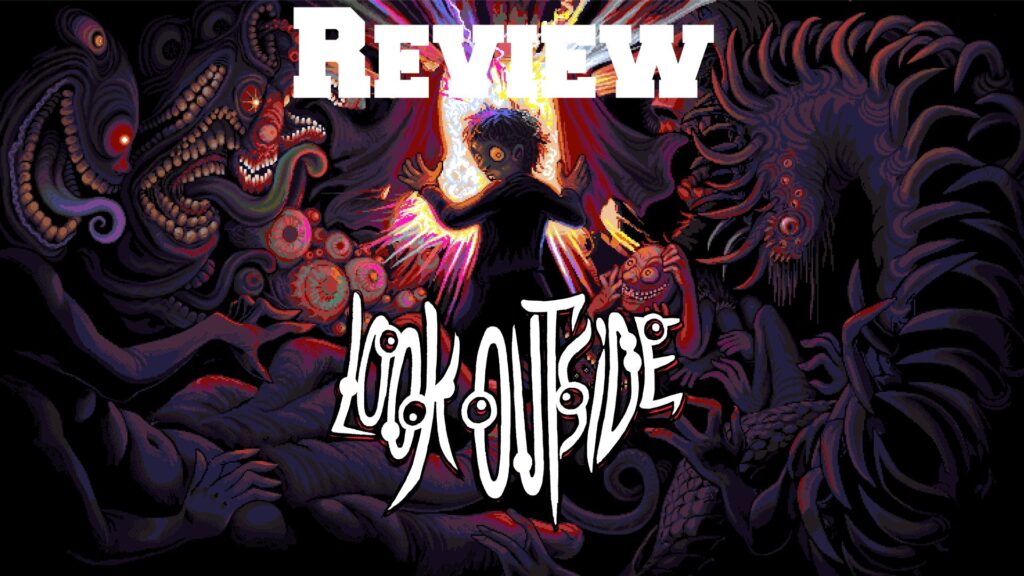
It’s been a long time since I’ve played an RPG like Look Outside. A top-down explore-a-thon, where the player painstakingly makes their way around the world, interacting with objects by standing in front of them and pressing an ‘interact’ button, it resembles the old school JRPGs of my youth. The Chrono Triggers and Pokemons—and why wouldn’t it, being that it was created in RPG Maker.
But when I say it’s been a long time, I’m not referring to the fact that I haven’t played JRPGs in years. That is true, but it’s not my point. What I mean is that Look Outside is a game that will stay with me for some time, the way Planescape Torment has, or the way Chrono Trigger has. It is a brilliant game, one I think everyone should play.
The way it works is this. You wake up in your apartment. A confused voice tells you to look outside, and then it begs you not to. If you want to finish the game quickly, simply look outside. If you want to continue, then under no circumstances should you.
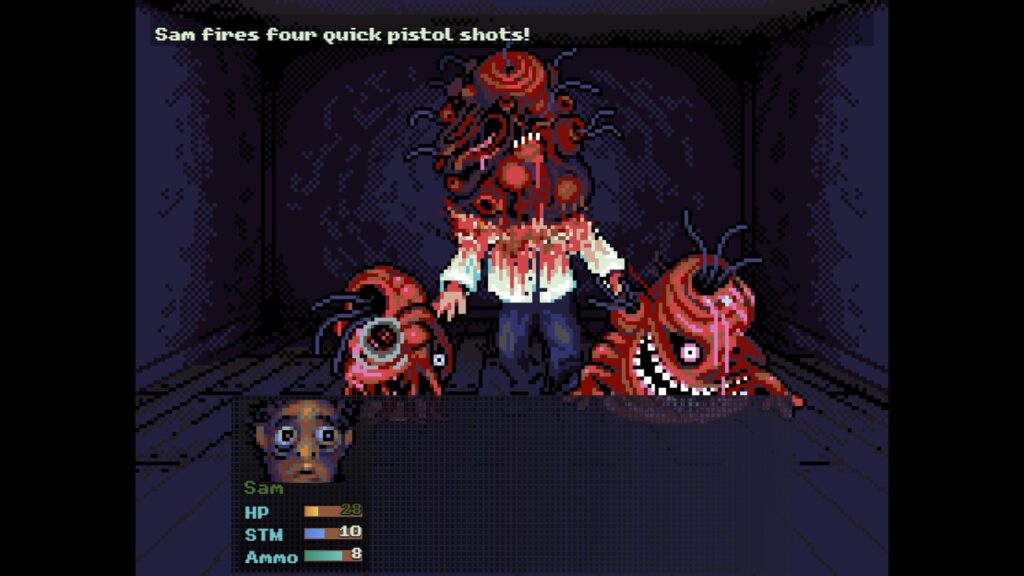
If you choose to stay, you then have to survive for 15 days. That’s how long they say it will take before you can go outside again. Can look outside again. And so begins Look Outside, a survival horror RPG. Like so many survival horror games, the survival takes a backseat to the horror—but Look Outside does focus on the minutiae of surviving to a degree not often seen in your Resident Evils or Silent Hills.
You have to eat, you have to bathe, you have to brush your teeth. Not looking after yourself comes with penalties—not harsh penalties, but penalties all the same. You have to find the materials to do these things too—soap, food, weapons, armour, all of these things and more are littered around the game area for you to collect. Inventory management isn’t really a thing, so you can pretty much take whatever you get your hands on.
It is a horror game. A cosmic horror game at that, the sort of game that throws nasty fucked up enemies at you to spook you, but really tries to scare you by forcing you to contemplate the nature of your own existence. Existential horror is my favourite genre, so maybe I’m biased.
So you already know it’s an RPG. A top-down RPG. That means it’s bound by the sort of clunky movement many games ditched decades ago. That means it’s trapped in a pixelated aesthetic that pales in comparison to the shiny lighting and HD graphics of modern titles. You, the main character, you look like this.
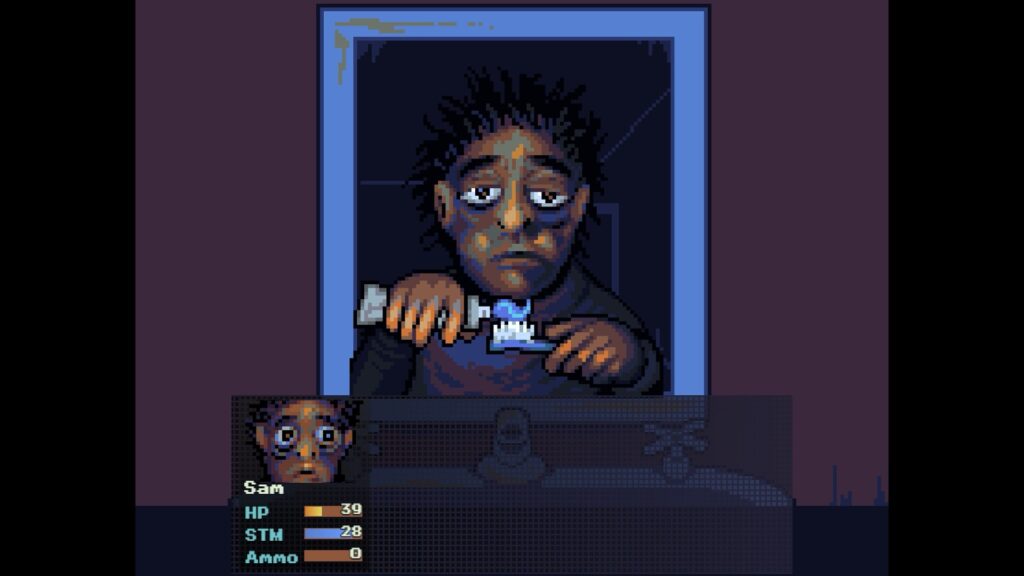
Like a Ren & Stimpy cartoon, where too much detail meets too little fidelity, features exaggerated to create an image that is inherently repulsive, a portrait of a human who fell into the uncanny valley and snagged on a rock before they reached the bottom.
And that’s your reference point for what a person is supposed to look like. You won’t see very many other people in Look Outside. You’ll see things that were once people. That strive to become people. But persons are few and far between in Look Outside. Something has changed, something…grand, has changed in the world, and that change has had a flow on effect.
That doesn’t mean you won’t see humanity around, though. It’s what I love about Look Outside, to be honest. You can attack anything you come across, but I never wanted to. I’d be back in my apartment, I’d hear a knock on the door, and every single time I’d peer through the peephole wondering if I should open it. Every time I’d greet them all the same. I couldn’t help it. This carried across to my adventures outside my apartment, too. A hunchback in a darkened room who wants to take your photo (or give you a kiss), a child made seemingly entirely of teeth who wants to play army men, a brain with the tentacles of a jellyfish named Norm. All of these characters—none of them ‘persons’ strictly—intrigued me far more than their visages horrified me.
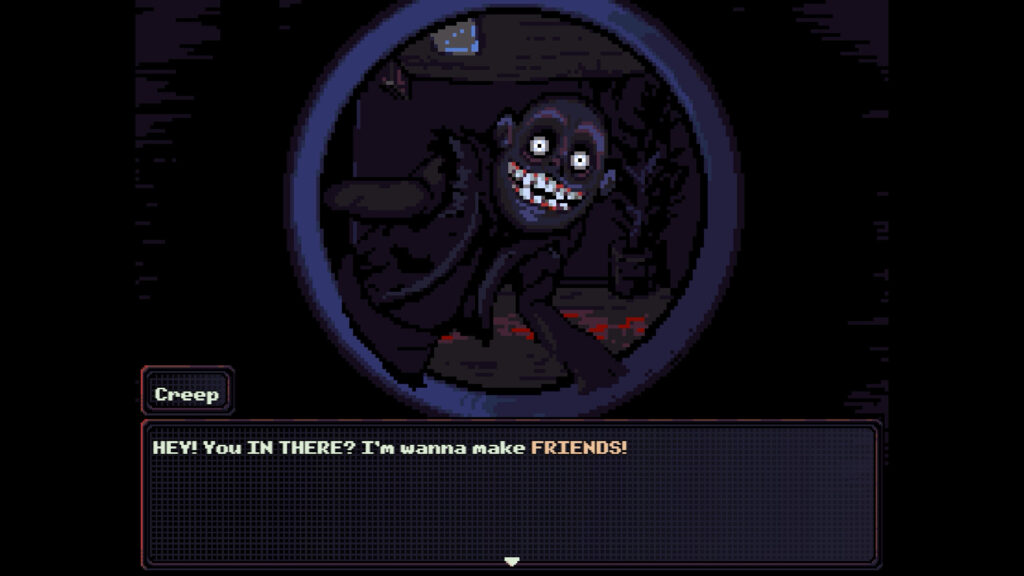
Even after being betrayed by someone I trusted, I still trusted again. I would trust again. Maybe it’s because the stakes weren’t really that high. If Look Outside has a fault, it’s that it’s not particularly challenging. I only felt particularly scared of losing my progress twice, and I never died…well not in a fight. I did Look Outside, after all.
If you do lose a fight, you’re stuck making do with Look Outside’s semi-tedious save system. On Normal, you only get to save when you’ve got some stories worth telling your neighbour—that’s maybe twice a day. I think. Time is weird in Look Outside. 15 days—the time you’ve got to survive for—is both a very long time and seemingly not enough, depending on what you want to achieve. If I felt any pressure at all, it was from time—but again, Look Outside wasn’t that difficult a game to play.
The real burden of the save system is having to repeat actions you’ve already done, but it sort of just means you can’t save scum decisions you make—not if you make them far away from your apartment, anyway. You have to live with them, which gives everything you do weight.
I know I missed out on adding a character to my party thanks to my decision making—but I also added another to my team because I fed one of my arms to a wall. The party system is pretty standard, but all the characters bring their own charm to the proceedings, and I think it’s impossible to get them all in one run? Which I think encourages multiple playthroughs (although I generally don’t indulge).
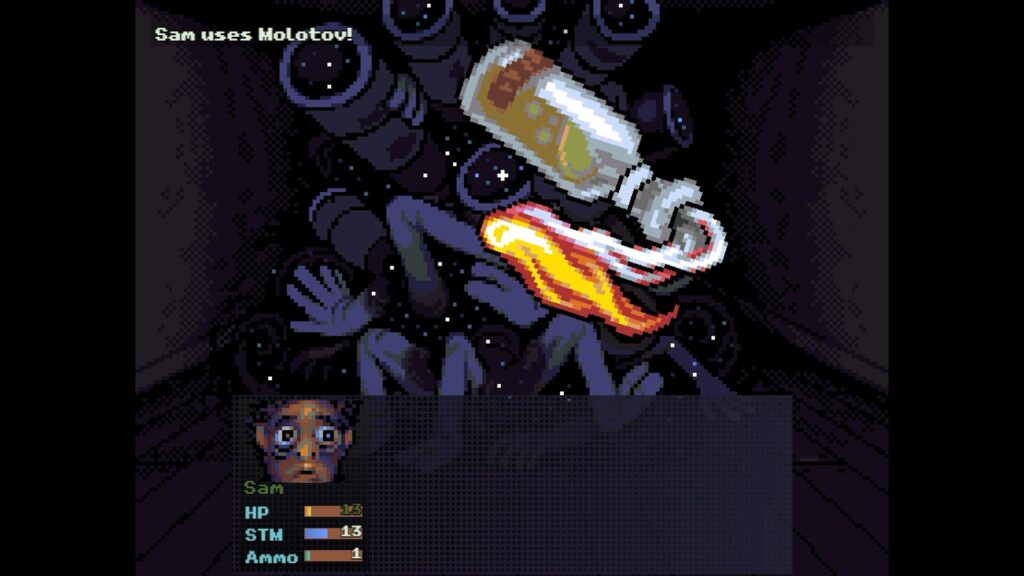
I am, of course, talking around quite a bit here. Look Outside is a narrative heavy game, where the story—both in grand strokes and in finer details—is at the heart of what I loved about it. So I won’t spoil things.
But the culmination of the story—and it can be done in around 5 hours—is a spectacular piece of cosmic horror storytelling that I have been thinking about for days. I understand there are multiple endings, but I only got the two. I think it absolutely stuck the landing with the (real) ending of my playthrough though—a satisfying blend of resolution, information and, of course, existential horror.
You should play Look Outside. You should Look Outside. And then you should play Look Outside again. I promise it’s worth it.

